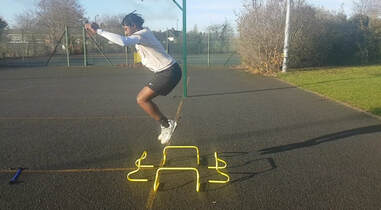 If you’re thinking ‘I’m no Olympian, Super Athlete, so why would I need to do plyometric exercises?’, the answer is simple. If you’re looking to improve your mobility or just looking to get the most out of your gym session, then plyometric exercises are for you. Plyometric training will improve your speed, agility, balance, power, coordination or even help you burn more calories, and will make you a more efficient exerciser – because it trains the body to produce more force for less energy expenditure. It’s not just for athletes, but useful for anyone looking to take their training and fitness to new heights. Plyometric exercises were invented to improve athlete power and explosiveness. Plyometrics comes with several benefits, but it’s arguably one of the most misunderstood and misused training methods out there, in fact most people will think jumping on a box eg. 4X30 at the end of their training session is plyometrics, when they are really just improving their cardiovascular strength. Discovered by sport scientist and track coach, Yuri Verkhoshansky, plyometric training can be best described as a method that forces muscles to undergo significant tension as quickly as possible. The muscle is in a relaxed state before it undergoes this great muscle contraction, which means that a plyometric jump, for example, is not preceded by a running start, but from standing with two feet planted on the ground. BENEFITS OF PLYOMETRIC EXERCISES 1. PLYOMETRIC WORKOUTS DON’T TAKE LONG The foundation of the plyometric training method stems from the fact that the quality of each plyometric exercise should be high, but the volume must be low. For example, plyometric box jumps should not be performed without end, or to the point of complete physical fatigue. Instead, they should be used as a way of stimulating the nervous system – enabling the body to jump as high and quickly as possible from a relaxed state. ‘What about the 3×30 box jumps that are in my workout’ you say? Perform these with caution! This type of training will work your cardio fitness, but it doesn’t qualify as plyometric training. The nervous and physical energy required to perform an exercise such as box jumps is high, which means that performing many them can mean you become overly fatigued and injury is more likely. 2. PLYOMETRIC EXERCISES IMPROVE YOUR GAME – WHATEVER IT IS Using plyometrics to increase the power of your upper body is important if you have hit a plateau in your training and are looking to experience a different style of training. If you’re a basketball player, baseball player, or football player, you can use plyometric exercises to improve the power of your throws and hits (as if having perfectly sculpted arms wasn’t reason enough!) It is understandable that, for most of the population, the idea of performing a plyometric move, such as a clapping push-up, sounds scary and close to impossible. But rest assured, there are several less demanding plyometric moves you can do to work on your upper body. 3. PLYOMETRICS MAKE YOU A FASTER RUNNER Our body is composed of fast- and slow-twitch muscle fibers that can be fine-tuned and adapted to our lifestyle. A long-distance runner utilizes mainly their slow-twitch muscle fibers that help them tackle endurance workouts. Alternatively, sprinters, or any athlete requiring bursts in speed, will master their fast-twitch muscle fibers as these help them exert maximal force in a short span of time (the downside being that they fatigue quickly). This is important to understand as plyometrics concentrates on your fast-twitch muscle fibers, which can improve power and keep you at the top of your game. If you would like to learn more about plyometrics exercise that can be of benefits for your email [email protected] or DM us on Instagram @tranquillity360fitness
0 Comments
Leave a Reply. |
AuthorsThis blog is updated by Tranquillity 360 fitness personal trainers, as well as other guest bloggers. Archives
July 2021
Categories |

 RSS Feed
RSS Feed